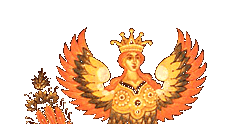Catalogue:
Search by:
Sale!
Login
Subscribe to news
Your E-mail
Comes out once a month!
We accept PayPal
|
Themes
| The House of Faberge:Faberge |
|
The House of Faberge
Gustav Faberge, the father of Karl Faberge, founded the jewelry firm "The House of Faberge" in 1842 in St. Petersburg. Karl, his first son, finished a German school in St. Petersburg and then studied the jeweler's art under the guidance of his father's friend Peter Pendin. He continued his education abroad in Paris and Dresden, where he studied jewelry collections of XVI-XVII centuries, Renaissance methods of jewelry enameling and also stone carving in Saxony. When Karl Faberge returned to Russia, his father decided to leave his business and immigrated to Dresden. In 1870 Karl Faberge headed the firm under the guidance of his teacher Peter Pendin. In 1872 Karl married a daughter of the business-manager of the Imperial Furniture Workshops. They had four children--Yevgeniy, Agafon, Alexander and Nikolay. Each of them later joined the firm.
In 1882 "The House of Faberge" participated in the exhibition of "Russian Artistic and Industrial Art" and won a gold medal for copies of ancient Greek treasures from Kerch and Crimea burial places. On April 16, 1885 Karl Faberge became a jeweler of the Imperial Court and was given the right to include the emblem of the Imperial two-headed eagle in his trademark. In 1883 the firm r the first order from the Imperial Court and since that time it became the Imperial Court's provider. The same year Alexander III ordered the first from what became a series of fifty-four subtly decorated Easter eggs. In 1885 "The House of Faberge" participated in the international exhibition of Applied Art in Neuenberg.
In 1886 Mikhail Pershin, the son of a peasant, began working at the firm. Soon he became the chief jeweler of the firm. Since that time "The House of Faberge" ceased producing copies of ancient jewelry and began producing jewelry enameled goods. In 1887 the firm began producing silver tableware. In this period Russia enjoyed economic prosperity, and expensive jewelry goods were in popular demand.
In 1896 Nikolay II came to the throne and became a constant client of the firm for the next twenty years. After Agafon's death in 1895, his brother, Yevgeniy Faberge, headed the firm. The fame of "The House of Faberge" grew and spread in Western Europe, the United States, and even in the Far East. The king of Siam bought many things for his collection in Bangkok. In an international exhibition in Paris "The House of Faberge" exhibited Imperial Easter Eggs and diamond jewelry goods where Faberge won the Order of a Legion of Honor and was awarded with the honorary title of an expert at producing gold jewelry. In 1903 "The House of Faberge" began to sell its goods in London.
After the Great October Revolution, the demand for expensive goods of "The House of Faberge" reduced and the firm closed in November of 1918. Karl Faberge immigrated firstly to Germany, and in 1920 he moved to Switzerland, where he died on September 24. With his death "the era of Faberge" came to a close. His sons, Alexander and Yegeniy, tried to restore the firm's fame, but all goods produced in Paris were a gloomy repetition of the goods produced in Russia. The Soviet Union sold large collections of Faberge's works to the United States. Among the buyers were Doctor Hammer, Lillian Tomas Pratt, Matilda Gadding Gray and others. When the Soviet government finished selling the rare goods of "The House of Faberge" their prices were extremely raised.
|
|



